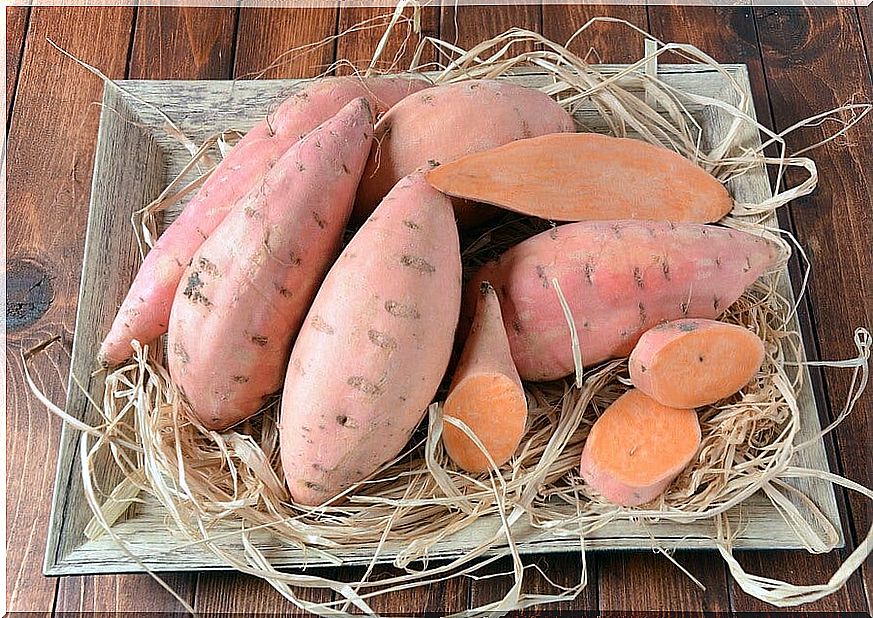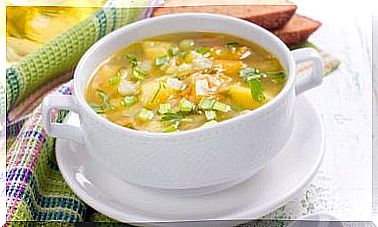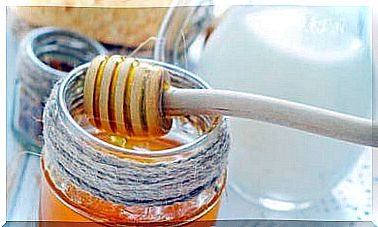10 Purple Foods That Improve The Quality Of Your Diet
Sure that many times you have included a wide variety of purple foods in your diet, but have you ever wondered where that color comes from? Well, the purple of food is due to a group of pigments that dissolve in water, called anthocyanins. They have many health benefits.
Chemists Strack and Wray described them as “the most important group of water-soluble pigments detectable in the region visible to the human eye.” They are located within a group of compounds known as flavonoids , which can be orange, red or purple.
They can be incorporated as food coloring to improve the appearance of the preparations, but also, according to scientific evidence, to give them added value. Are you interested in knowing which are the purple foods with the highest anthocyanin content and what benefits do they offer us?
Purple foods to include in the diet
Purple foods, apart from having such a showy color, are healthy. See what you can include in your diet.
1. Purple sweet potato
According to the food table, the purple sweet potato is an energy product, since 100 grams provide 20 grams of starch and almost 4 grams of sugar, which give it that characteristic sweet flavor. It also has 3% fiber and more than 300 milligrams% potassium.
In the Journal of Food Science they studied it for its high anthocyanin content. They found that the purple sweet potato used as a supplement was effective in controlling obesity in laboratory animals. In addition, it demonstrated its ability to reduce metabolic risk.
Other works studied the preventive use of purple sweet potato on colorectal cancer in animals. The findings were favorable as a preventive measure, although it was not directly studied in humans.
The recommended serving of purple sweet potato is 1 cup or 135 grams per day, preferably steamed, to preserve the anthocyanin content.
2. Purple cabbage
Brassica oleracea, also known as cabbage , red cabbage or purple cabbage , belongs to the family of cabbage and purple food one most representative. Like any other leaf, it is a favorite food for low-calorie diets because it contains over 90% water and more than 2% fiber.
The USDA food table indicates that red cabbage contains a lot of potassium, beta-carotene and vitamin K. In addition, its contribution of vitamin C, greater than 50 milligrams%, is similar to that of several citrus fruits. According to some authors, it has an anti-inflammatory effect on the skin of experimental animals.
It is used, like green cabbage, in salads, stews and in combination with cooked apple. Red cabbage a la Madrid includes onion, apple, bacon, sugar and pepper.

3. Star apple
The star apple is a berry-like fruit named Chrysophyllum cainito, native to Central America and the Caribbean. It is distributed in many tropical regions of the world. They have a sweet flesh that produces a milky juice and when cut presents a radiant star pattern.
Star apple extract has been studied for its antidiabetic activity, as well as for the treatment of coughs and pain. In different experimental models, the protective effect of star apple juice on the stomach mucosa has been described.
A 90 gram or 30 ounce serving of star apple can be eaten as fresh fruit or taken as juice. It works best if you keep it cold in the refrigerator.
4. Red dragon fruits
Red dragon fruit is a tropical food with a texture similar to kiwi. Its pulp is bright and has a reddish purple color that contains many seeds that can be eaten easily.
Its sweetness is given by the high content of sugars that considerably increase the calorie intake. According to the USDA table, 80% of its nutrients are simple carbohydrates and every 100 grams of fruit provides 264 calories. In addition, it contains 2% fiber.
Some laboratory tests suggest that red dragon fruit extract, which is high in anthocyanin, can stop the growth of cancer cells. Although no specific studies have been conducted in humans.
You can eat 2 units a day as fresh fruit, in salad, in smoothies, as a smoothie or as part of a rich lemonade.
5. Purple cauliflower
From the same family as purple cabbage, Brassica oleracea var. botrytis is a cruciferous plant that, due to genetic mutation, has a very attractive purple color. Some bioactive compounds analyzed in cauliflower have an important antioxidant activity.
A study in 2 Chinese populations concluded that the inclusion of cruciferous vegetables such as cauliflower in the diet can decrease the risk of certain cardiovascular diseases and increase life expectancy in general.
A 90-gram serving of purple cauliflower a day will provide 29 calories, 5 grams of carbohydrates and 25 milligrams of vitamin C. Remember that steaming or lightly sautéing it will preserve the anthocyanins better.
6. Eggplant
A cup of chopped aubergine a day provides us with 76 grams of water, 5 grams of carbohydrates and 2.5 grams of fiber. For these contributions it is one of the most used vegetables in weight loss diets.
Its purple skin stands out for its high content of anthocyanins, especially the nasunin type. A laboratory study revealed the antioxidant capacity of nasunin to be recommended as a potent cardioprotectant.
Some traditional recipes for aubergines are stuffed, in lasagna with meat, grilled or baked cake. It is one of the stars of vegan diets.
7. Blackberries
We cannot fail to mention blackberries among the best known purple foods. Its intensity in color is due to the high content of anthocyanin.
A 140 gram serving contains 22 grams of carbohydrates, of which 70% are simple sugars that are quickly digested. In addition, they manage to cover 25% of what is recommended for fiber and 6% of iron.
The journal Food and Nutrition Research highlights the properties of anthocyanin-rich fruits to be used as protective ingredients for chronic diseases, such as heart disease, diabetes and certain types of cancer.
8. Purple grapes
According to the nutritional table, 100 grams of grapes provide very low calories, representing 3% of total calories. In addition, they cover 12% of the daily fiber, 88% for vitamin B2 and 99% of the recommended manganese. Some experts support the antioxidant properties of purple grapes, especially because of the presence of resveratrol.
Sandoval and other specialists, when inducing liver disease in experimental animals, concluded that anthocyanins and other phenolic compounds, such as those found in grapes, have a hepatoprotective activity.
9. Purple carrots
Purple carrots are just as crisp and sweet as the traditional orange ones. But its antioxidants, such as anthocyanins and other polyphenols (chlorogenic acid and cinnamic acid) are more abundant than in other varieties.
Some benefits of polyphenols have been studied. In the journal Nutrients they conclude that they can contribute to reducing body weight and obesity, while other researchers link them to the control of type 2 diabetes.
An 80 gram serving of purple carrots a day will be fine for mid-morning snacks, as they are lower in calories than other varieties and have a low glycemic index.
10. Purple barley
Any variety of barley stands out for its high content of fiber and minerals, such as iron, magnesium, manganese and selenium. But purple barley provides anthocyanin, which adds value to the nutritional content.
Barley is also characterized by having beta-glucan, a type of soluble fiber studied, since it has recognized benefits, especially those linked to obesity, osteoporosis, atherosclerosis and immunomodulation.

Benefits of including antiocyanins in the diet
Ortiz and other researchers expose the properties of anthocyanins for human health. These have a remarkable antioxidant activity, since they are capable of blocking free radicals and other agents capable of causing oxidative stress in the cells of different tissues.
Here are some benefits:
- They prevent cardiovascular diseases, as they prevent endothelial dysfunction and blockage of the arteries.
- They delay cellular aging.
- They help increase concentration and improve memory.
- They can have hypoglycemic effects in diabetic patients.
- They have anti-inflammatory activity, by inhibiting nitric oxide and reducing prostaglandins.
Nature gives us purple foods, not only to give color to preparations, but also to maintain or improve health. Red cabbage, blackberries, aubergines, purple sweet potatoes and grapes, among others, are some of those that can improve the quality of the diet.









